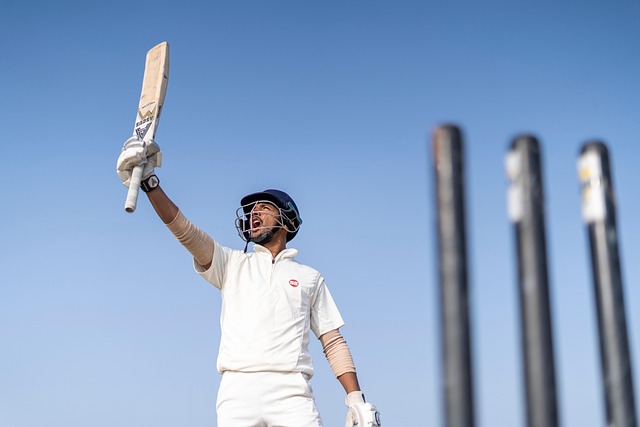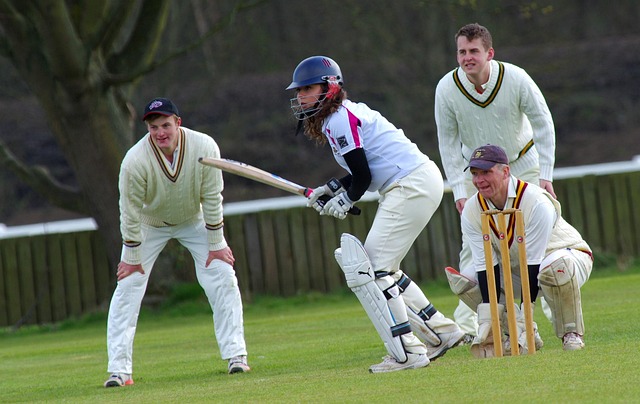The West Indies cricket team, once dominant with aggressive players like Sir Vivian Richards and Malcolm Marshall, faced decline in the late 1980s/90s due to rule changes, player retirement, off-field issues, and leadership gaps. Factors including evolving international strategies, advances in coaching, equipment, and technology, as well as player emigration to foreign leagues contributed. Globalized cricket and media scrutiny also affected their home field advantage. Despite these challenges, initiatives like the West Indies cricket hall of fame preserve their rich history, while the West Indies Cricket Board (WICB) works on revamping training facilities, increasing media coverage, promoting cricket tourism, breaking gender barriers, and leveraging high-profile matches to revitalize the team.
The West Indies cricket team, once a dominant force on the global stage, has witnessed a decline in its reign. This article explores the multifaceted reasons behind this shift, delving into the changing dynamics of the sport, the impact of player migration, and evolving international competitions. We analyze the specific factors that contributed to the decrease in the West Indies’ home field advantage and propose strategies for potential revival, shedding light on key periods in the team’s history.
- Rise and Fall of West Indies Dominance
- Changes in Cricket Dynamics
- Impact of Player Emigration
- Evolution of International Competition
- Decline in Home Field Advantage
- Strategies for Revival
Rise and Fall of West Indies Dominance

The West Indies cricket team once dominated international cricket, leaving an indelible mark on the sport’s history. Their rise to prominence began in the mid-20th century, characterized by a blend of exceptional talent and a unified team spirit. Iconic players like Sir Vivian Richards, Malcolm Marshall, and Gordon Greenidge became legends, inspiring generations with their unmatched skill and power. The West Indies side consistently challenged for major trophies, showcasing an aggressive and dynamic style that captivated fans worldwide.
However, the dominance started to wane in the late 1980s and 1990s. Several factors contributed to this decline. Changes in cricket rules and regulations, which favored defensive play, disrupted their traditional, high-scoring approach. The retirement of iconic players left a void that was difficult to fill. Additionally, off-field issues within the team and the lack of consistent leadership affected performance. Despite these challenges, the West Indies’ rich history and contributions to cricket remain celebrated. Visit us at Cricket bats from the West Indies anytime to explore more about their legendary journey. The West Indies cricket hall of fame stands as a testament to their enduring impact on the sport. Even the fastest bowler in West Indies history reflects a bygone era of unyielding dominance.
Changes in Cricket Dynamics

The decline of the dominant era of the West Indies cricket team can be traced back to several shifts in the sport’s dynamics, both on and off the field. The once formidable side, known for its all-round prowess and iconic players like Sir Viv Richards and Malcolm Marshall, faced new challenges as the 20th century turned. One significant factor was the evolution of international cricket strategies; teams began adopting more specialized approaches, focusing on spin bowling and limited-overs formats, which posed a different challenge to the West Indies’ traditional fast-bowling-heavy strategy.
Moreover, changes in coaching methodologies played a role. As cricket history in Grenada and other Caribbean islands evolved, the emphasis shifted from the grassroots level to professional development. The move towards more structured training regimens and specific skill coaching was not without its impacts. Over time, this changed the face of West Indies cricket; it became less about the raw talent of players like those who dominated at St. George’s Park in Barbados and more about technical proficiency and tactical awareness. These shifts were further exacerbated by changes in cricket fashion and equipment trends, which also influenced player performances and team dynamics on iconic grounds like Kensington Oval. Even the role of umpiring in West Indies cricket matches evolved, with new technologies introducing a different dynamic to the game. To stay at the top, the West Indies cricket team had to adapt, leading to both successes and challenges that shaped their current standing in international cricket.
Impact of Player Emigration

The decline of the West Indies’ dominance in cricket can be attributed, in part, to the significant impact of player emigration. As talented cricketers from the region sought better opportunities abroad, particularly in English county cricket, the West Indies team began to lose its edge. This trend accelerated during the late 20th century, affecting not just the quality of play but also the continuity and development of domestic cricket infrastructure. The iconic Kensington Oval in Barbados, a historical hub for West Indies cricket, witnessed declining fortunes as key players left, impacting match outcomes and crowd enthusiasm.
The emigration of top players disrupted the established cricket coaching methodologies of the West Indies, which had been built around fostering local talent. As a result, the team struggled to replace legendary figures like Malcolm Marshall, the fastest bowler in West Indies history, and iconic batting stars who had once led them to victories in prestigious series, such as the memorable West Indies v. India cricket series. This exodus also raised concerns about the long-term sustainability of the sport’s growth in the region, prompting many to call for improved player retention strategies and the revitalization of local cricket rules and regulations. Even the uniforms worn by West Indies cricketers became a point of connection with their heritage, giving us a call to preserve and promote the rich history of cricket in the West Indies.
Evolution of International Competition

The evolution of international competition played a significant role in the decline of the West Indies cricket team’s dominance. As cricket rules and regulations evolved, the dynamic nature of the game changed, requiring teams to adapt their strategies. The rise of new playing styles and techniques, such as aggressive batting and innovative bowling tactics, posed challenges to the traditional strengths of the West Indies side. For instance, while the West Indies had long been renowned for their powerful fast bowlers, like the fastest bowler in West Indies history, the game’s shift towards more nuanced spin and swing bowling created a need for diversity in their approach.
This period also witnessed the growth of domestic cricket leagues worldwide, which attracted top players away from traditional international tours. The popularity of these leagues, including those in the Caribbean itself, led to increased competition for the West Indies’ talent pool. Furthermore, the global reach and TV coverage of Caribbean cricket tournaments, with venues like Kensington Oval, Barbados, becoming iconic, created a new level of exposure and scrutiny that tested the team’s consistency. The combination of these factors contributed to a shift in the power dynamics within international cricket, making it increasingly difficult for the West Indies to maintain their dominant position on the global stage.
Decline in Home Field Advantage

The decline of the West Indies’ dominance in international cricket can be attributed, in part, to a loss of their once formidable home field advantage. Historically, teams from the Caribbean have reaped significant benefits from playing on their familiar pitches and in front of passionate local fans. However, with the advent of globalized cricket and increased exposure through social media, this edge has begun to erode. The impact of social media on West Indies cricket fans is profound; it’s changed how supporters engage with the game and the team. Enthusiastic fans can now access live streams and instant match updates from anywhere in the world, leading to a more global perspective on cricket and potentially dimming the excitement that once surrounded local matches.
Additionally, an increasing focus on cricket tourism in destinations like St. George’s Park, Grenada, has drawn attention away from traditional West Indies cricket hotspots. This shift not only impacts match attendance but also diverts investment from developing home-grown talent. Cricket academies across the Caribbean, though a positive development for player cultivation, sometimes detract from the emphasis on nurturing local players who could help restore the team’s former glories. Even so, there remains a rich history of cricket in the West Indies, with iconic venues like St. George’s Park echoing the achievements of past legends. Find us at cricket history West Indies to experience and learn more about this vibrant sport’s enduring legacy.
Strategies for Revival

The decline of the West Indies cricket team’s dominance can be attributed to several factors, including the loss of iconic players and a shift in coaching strategies. To revive their once-mighty status, the West Indies Cricket Board (WICB) has implemented various initiatives focusing on player development and infrastructure enhancement. One such strategy involves establishing state-of-the-art training facilities like St. George’s Park in Grenada, which serves as a hub for young cricketers to refine their skills. This commitment to nurturing talent aims to breed the next generation of West Indies cricket stars.
Moreover, increasing media coverage and promoting cricket holidays and tours within the region can spark renewed interest among fans and players alike. The WICB has also been proactive in breaking gender barriers, ensuring that women’s cricket receives the recognition it deserves. These efforts not only foster diversity but also contribute to the overall growth of the sport in the West Indies. By combining these strategies and leveraging resources like Pakistan vs. West Indies test matches as a platform for inspiration, the team is well-positioned for a potential resurgence on the global cricket stage, attracting cricket enthusiasts from all over to witness their comeback.
The dominance of the West Indies cricket team, once a powerhouse on the international stage, has declined over time due to a confluence of factors. Changes in cricket dynamics, player emigration, and evolving global competition have significantly impacted their performance. However, with the right strategies focusing on nurturing talent and leveraging technological advancements, there’s hope for the West Indies cricket team to revive its former glory and reclaim its place among cricket’s elite.







Leave a Reply